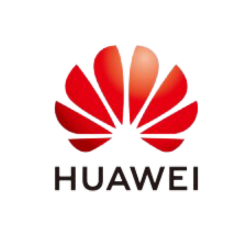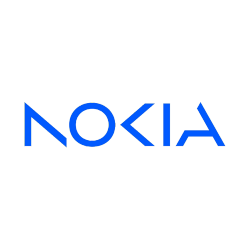
In the world of mobile phones during the mid-2000s, one device that attempted to capture user attention was the Samsung X810. This mobile phone, announced in the second quarter of 2005, reflects a significant marker of technological development during its time. Despite being eventually discontinued, the Samsung X810 holds historical value for the insight it provides into cell phone technology evolution. This article will delve into the various aspects of the Samsung X810, examining its features, capabilities, and place in the mobile technology landscape.
Design and Build
The Samsung X810's design was characteristic of the early 2000s feature phones. With dimensions of 89 x 37 x 24 mm and a weight of just 85 grams, this device was compact and lightweight, making it conveniently portable. The phone featured a sleek bar form factor and came equipped with a Mini-SIM slot. Its build quality was solid for the time, despite not featuring the advanced materials found in modern smartphones.
Display
The display of the Samsung X810 was a TFT screen capable of showing 65K colors. At 1.6 inches, with a resolution of 128 x 160 pixels, this screen might seem insufficient by today's standards but fulfilled its purpose effectively back then. The screen-to-body ratio was approximately 24.5%, providing a usable area for interacting with the device's interface.
Camera
For photography, the Samsung X810 was equipped with a single 1.3MP camera, which was relatively standard for feature phones of this era. It included an LED flash, enhancing its utility in low-light conditions. Users could also record video. However, there was no front-facing camera, as selfies were not a mainstream phenomenon back then.
Storage and Memory
The internal storage of the Samsung X810 was 90MB, which could be expanded using a dedicated microSD slot. This was an appealing feature at a time when on-board memory was highly limited. The phone's memory capabilities were suitable for basic tasks, including storing contacts, call records, and a limited number of media files.
Performance and Operating System
Running a proprietary feature phone operating system, the Samsung X810 was designed to manage everyday tasks like calling, texting, and basic Java-based applications. The phone's processing power was modest but suffice for navigating its interface, making calls, and sending messages. It supported SMS, EMS, MMS, and Email for messaging, while its Java MIDP 2.0 support allowed additional application functionality.
Connectivity
Regarding connectivity, the Samsung X810 supported GSM technology across 900, 1800, and 1900 MHz bands, with GPRS Class 10 and EDGE technology available for data services. Bluetooth 1.2 with A2DP showed the phone's capabilities for wireless audio streaming, a relatively new feature in mobile phones at the time. However, it lacked WLAN and positioning capabilities.
Battery Life
Powering the Samsung X810 was a removable Li-Ion 800mAh battery. Off this modest capacity, the phone delivered up to 200 hours of standby time and around 5 hours and 30 minutes of talk time, which was pretty standard for feature phones of this period.
Sound and Multimedia
The multimedia capabilities of the Samsung X810 were basic. The phone accommodated a speaker for audio and supported vibration and downloadable polyphonic ringtones for alerts. However, there was no standard 3.5mm audio jack, focusing its multimedia experience around built-in functionalities and Bluetooth-connected devices.
Price and Market Influence
Upon its release, the Samsung X810 was priced at approximately 80 EUR. This pricing positioned it as an affordable option in the feature phone market. While it was eventually discontinued, its influence remains in the context of affordable mobile technology solutions that gradually led towards the advanced smartphones we see today.
Conclusion
The Samsung X810 stands as a representative of early 2000s mobile technology, bridging the gap between basic cell phones and more sophisticated smartphones. Its combination of basic multimedia capabilities, expandable storage, and a compact design underscore a significant period in mobile technology, setting a foundation for the future developments in the field. Despite its discontinuation, the Samsung X810 remains a point of interest for enthusiasts and historians documenting the evolution of mobile phones.
Main Features of Samsung X810
- Compact and lightweight design with dimensions of 89 x 37 x 24 mm and a weight of 85 g.
- GSM technology supporting 2G bands (GSM 900 / 1800 / 1900).
- 1.6-inch TFT display with 65K colors.
- MicroSD card slot for expandable storage.
- 90MB internal memory.
- 1.3 MP main camera with LED flash and video capability.
- Bluetooth 1.2 with A2DP support for wireless audio streaming.
- Removable Li-Ion 800 mAh battery providing up to 200 hours standby time and up to 5 hours 30 minutes of talk time.
- Support for SMS, EMS, MMS, and Email messaging.
- Java MIDP 2.0 support for applications and games.
- Available at a price point of about 80 EUR.
Disadvantages of Samsung X810
- Discontinued model with no support for modern networks.
- Small display (1.6 inches) with low resolution (128 x 160 pixels).
- No front camera for selfies.
- Lacks 3G/4G/5G support, only supports GSM technology.
- No WLAN capability for Wi-Fi connectivity.
- No GPS for navigation and location services.
- No FM Radio feature.
- No standard 3.5mm headphone jack.
- Proprietary USB port instead of standard microUSB or USB-C.
- Limited internal storage of 90MB, though expandable via microSD.

View Also
More Phones
All Rights Reserved +14266 Phones © Mobilawy 2025

























